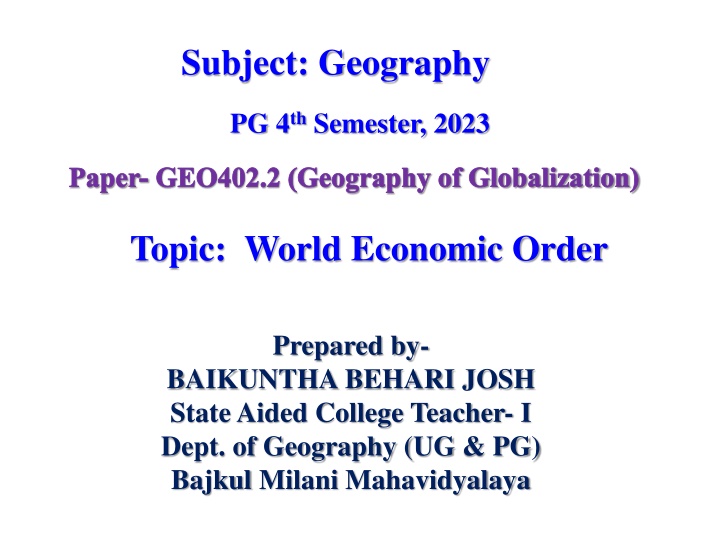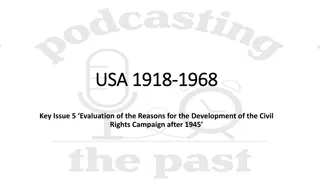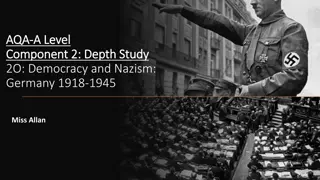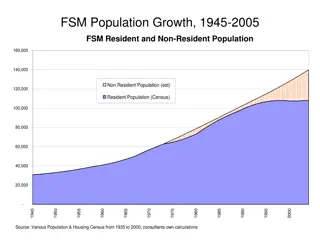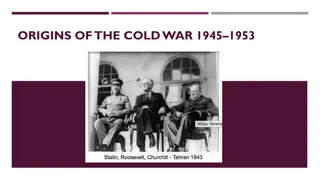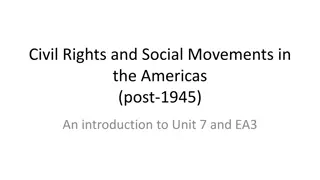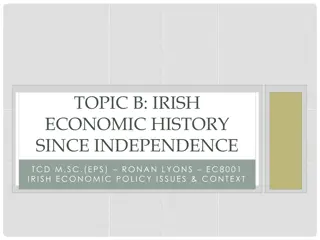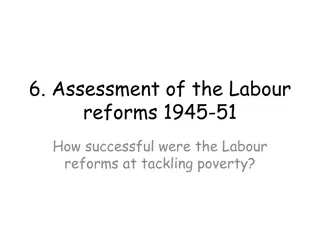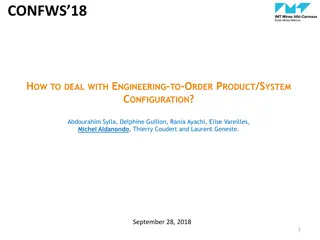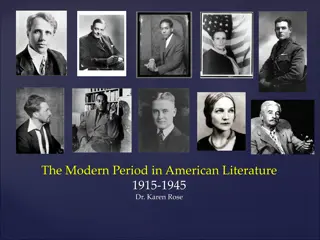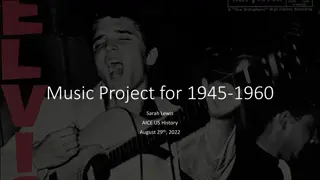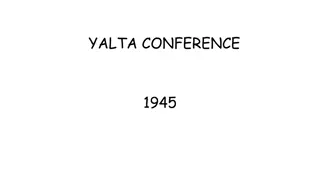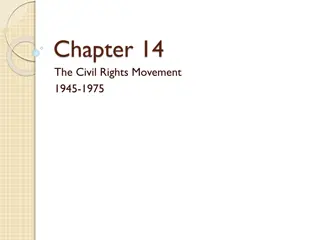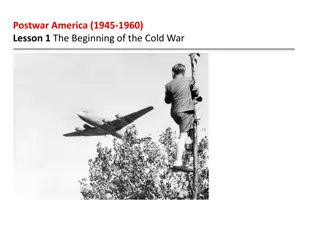Evolution of World Economic Order Since 1945: Bretton Woods System
The evolution of the world economic order since 1945, shaped by global politics and economics, led to the establishment of the Bretton Woods System in 1944. This system linked foreign currencies to the U.S. dollar and aimed to promote economic growth post-World War II through institutions like the IMF and World Bank. However, the system faced challenges and eventually collapsed due to various factors, leading to the shift from fixed to floating exchange rates.
Uploaded on Apr 04, 2025 | 0 Views
Download Presentation

Please find below an Image/Link to download the presentation.
The content on the website is provided AS IS for your information and personal use only. It may not be sold, licensed, or shared on other websites without obtaining consent from the author.If you encounter any issues during the download, it is possible that the publisher has removed the file from their server.
You are allowed to download the files provided on this website for personal or commercial use, subject to the condition that they are used lawfully. All files are the property of their respective owners.
The content on the website is provided AS IS for your information and personal use only. It may not be sold, licensed, or shared on other websites without obtaining consent from the author.
E N D
Presentation Transcript
Subject: Geography PG 4th Semester, 2023 Paper- GEO402.2 (Geography of Globalization) Topic: World Economic Order Prepared by- BAIKUNTHA BEHARI JOSH State Aided College Teacher- I Dept. of Geography (UG & PG) Bajkul Milani Mahavidyalaya
World Economic Order: Evolution of World Economic Order- The global or World economic order has been emerged since 1945, reflecting changes both in the larger setting of world politics and economics. According to Robert Gilpin, and international economic order is largely determined by the larger configurations of World Politics and state interests. In the post war years, the establishment and evolution of the liberal international substantially defined by two most significant conditions of the international setting and its evolution namely cold war politics and American hegemony until around the end of the 1980s. economic order were
The Bretton Wood System Foreign Currencies are linked to the U.S. Dollar which in turn is linked to gold British Pound Per Value $ 2.80/ U.S. Dollar German Mark Per Value DM 4.2/$ Italian Lira Per Value Lit 625/$ Gold $ 35 an Ounce Japanese Yen Per Value 360/$
A new international monetary system was designed in 1944 in Bretton Woods in New Hampshire. The goal was to build an economic order that would facilitate postwar economic growth. Two multinational institution were established: The International Monetary Fund (IMF) to maintain the international monetary system. The World Bank to promote the general economic development. So, the Bretton Wood agreement was reached by 730 delegates in 1944 who were the representatives of the 44 allied nations. The delegates decided to use the gold standard to create a fixed currency exchange rate. This agreement also facilitated the creation of immensely important structures in the financial world i.e. International Monetary Fund (IMF) International Bank for Reconstruction and Development or IBRD. Today it is known as the World Bank.
The agreement involved representatives from 44 nations and brought about creation of IMF and WB. It fixed the currency exchange rate which was failed later. During the time of 1944 the World economy was very shaky and the allied nations sought to meet discuss and find a solution for the prevailing issues that plagued currency exchange. The system was depended on and was used heavily until the early 1970s.
Collapse/ End of Bretton Wood system It may be say that end of fixed exchange rate and emergency of floating exchange rate. Causes of collapse / end:- Rising costs of overseas involvements. U.S financial and increasing of competitive strength. US $ no longer seen as principal currency. US pressurized to IMF and WB for shifting to floating exchange rate.
NIEO Concept and Emergence New International economic order or NIEO Non Alignment Movement countries or NAM countries which are the least developed countries. The challenge of the NAM countries was to be more developed economically and eliminating the poverty from their people or country. The countries become political independent but they were economically depended on the developed or richer countries. The United Nations conference on Trade and Development (UNCTAD) brought out a report in 1972 entitled Towards a New Trade Policy for Development.
UNCTAD proposed to reform the global trading system as:- Give the controlling power to the LDCs over their natural resources which were exploited by developed countries. Obtain access to western markets so that they (LDCs) could sell their products and make trade more beneficial for undeveloped countries. Decreasing the cost of technology and tools from the western countries as they easily buy or applied in own country. Provide the role to play in international economic institution.
Gardually, the nature of non-alignment changed It started to give greater importance to economic issues by the mid 1970s they became most important economic issues. NAM became an economic group . By the late 1980 NIEO became weak because a unified group was evolve out by developed countries.
